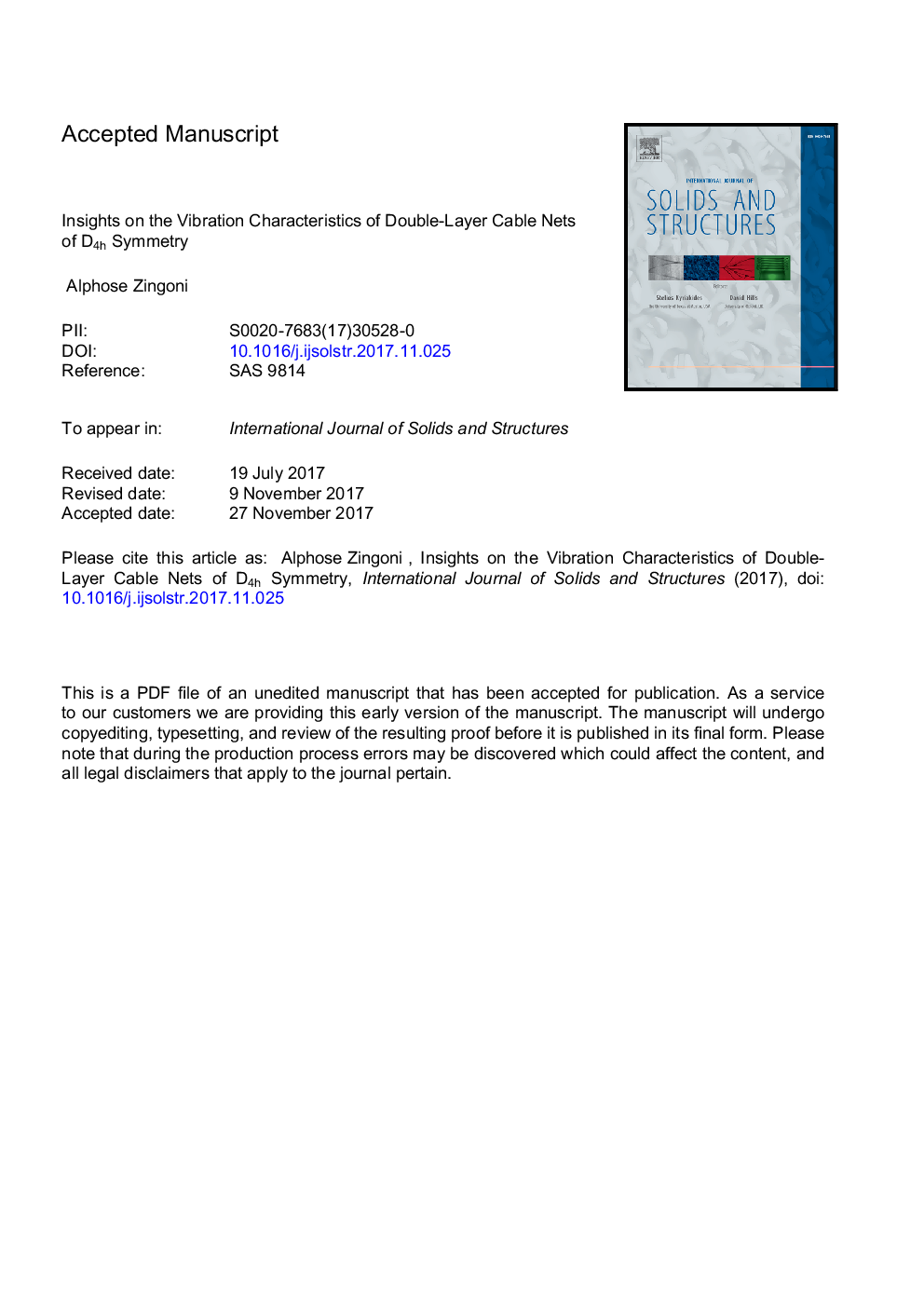| Article ID | Journal | Published Year | Pages | File Type |
|---|---|---|---|---|
| 6748434 | International Journal of Solids and Structures | 2018 | 55 Pages |
Abstract
Coupling shallow cable nets into multi-layer configurations offers the possibility of altering the vibration properties of single-layer systems in a beneficial way. When members of appropriate stiffness and damping characteristics are employed as coupling devices, there will be a dynamic interaction between the motions of the layers, with the combined system expected to exhibit a higher stiffness and damping response than the individual layers. Vertical coupling of two identical single-layer cable nets of C4v symmetry results in a double-layer configuration of D4h symmetry, the vertical motions of which are strongly influenced by the symmetry properties of the configuration as well as the stiffness and damping properties of the coupling members. By considering a 32-node double-layer cable net as a case study, the present investigation employs group theory to reveal important insights on the vibration characteristics of cable nets of the type in question, at the same time laying out a computational framework for an efficient vibration analysis of such systems.
Related Topics
Physical Sciences and Engineering
Engineering
Civil and Structural Engineering
Authors
Alphose Zingoni,
